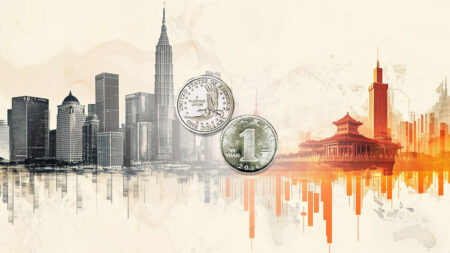- Gold price consolidates around $3,340 as investors await a meeting between US President Trump and Russian leader Putin.
- US Trump hinted that Russia’s Putin might agree to end the war in Ukraine.
- Traders remain confident that the Fed will reduce interest rates in September.
Gold price (XAU/USD) trades with caution around $3,340 during the European trading session on Friday. The precious metal trades in a limited range as investors await the meeting outcome between United States (US) President Donald Trump and Russian leader Vladimir Putin, which is scheduled for Friday in Alaska.
Investors will pay close attention to the Trump-Putin meeting as both will discuss ending the war in Ukraine. Theoretically, easing geopolitical tensions weigh on demand for safe-haven assets, such as Gold.
The comments from US President Trump in an interview with Fox News, expressed confidence that Russian leader Putin would agree to stop war in Ukraine. “I think he’s going to make a deal, Trump said and added that he would then call Ukrainian President Volodymyr Zelenskiy and his European allies to schedule a meeting for further talks.
Meanwhile, firm market expectations that the Federal Reserve (Fed) will cut interest rates in the September policy meeting continue to support the Gold price. According to the CME FedWatch tool, the probability of the Fed cutting interest rates in September is 92.6%.
The scenario of lower interest rates by the Fed bodes well for non-yielding assets, such as Gold.
Fed’s interest rate cut expectations remain healthy even as the US Producer Price Index (PPI) report for July has signaled that business owners have started passing the impact of tariffs to consumers. Both headline and the core PPI rose by 0.9% on a month.
Gold technical analysis
Gold price trades in a Symmetrical Triangle, which indicates a sharp volatility contraction. The upper border of the above-mentioned chart pattern is plotted from the April 22 high around $3,500, while the downward border is placed from the May 15 low near $3,180.86.
The yellow metal wobbles near the 20-day Exponential Moving Average (EMA) around $3,351.00, indicating a sideways trend.
The 14-day Relative Strength Index (RSI) oscillates inside the 40.00-60.00 range, suggesting indecisiveness among market participants.
Looking down, the Gold price would fall towards the round-level support of $3,200 and the May 15 low at $3,121, if it breaks below the May 29 low of $3,245.
Alternatively, the Gold price will enter uncharted territory if it breaks above the psychological level of $3,500 decisively. Potential resistances would be $3,550 and $3,600.
Gold daily chart
Gold FAQs
Gold has played a key role in human’s history as it has been widely used as a store of value and medium of exchange. Currently, apart from its shine and usage for jewelry, the precious metal is widely seen as a safe-haven asset, meaning that it is considered a good investment during turbulent times. Gold is also widely seen as a hedge against inflation and against depreciating currencies as it doesn’t rely on any specific issuer or government.
Central banks are the biggest Gold holders. In their aim to support their currencies in turbulent times, central banks tend to diversify their reserves and buy Gold to improve the perceived strength of the economy and the currency. High Gold reserves can be a source of trust for a country’s solvency. Central banks added 1,136 tonnes of Gold worth around $70 billion to their reserves in 2022, according to data from the World Gold Council. This is the highest yearly purchase since records began. Central banks from emerging economies such as China, India and Turkey are quickly increasing their Gold reserves.
Gold has an inverse correlation with the US Dollar and US Treasuries, which are both major reserve and safe-haven assets. When the Dollar depreciates, Gold tends to rise, enabling investors and central banks to diversify their assets in turbulent times. Gold is also inversely correlated with risk assets. A rally in the stock market tends to weaken Gold price, while sell-offs in riskier markets tend to favor the precious metal.
The price can move due to a wide range of factors. Geopolitical instability or fears of a deep recession can quickly make Gold price escalate due to its safe-haven status. As a yield-less asset, Gold tends to rise with lower interest rates, while higher cost of money usually weighs down on the yellow metal. Still, most moves depend on how the US Dollar (USD) behaves as the asset is priced in dollars (XAU/USD). A strong Dollar tends to keep the price of Gold controlled, whereas a weaker Dollar is likely to push Gold prices up.
Read the full article here















